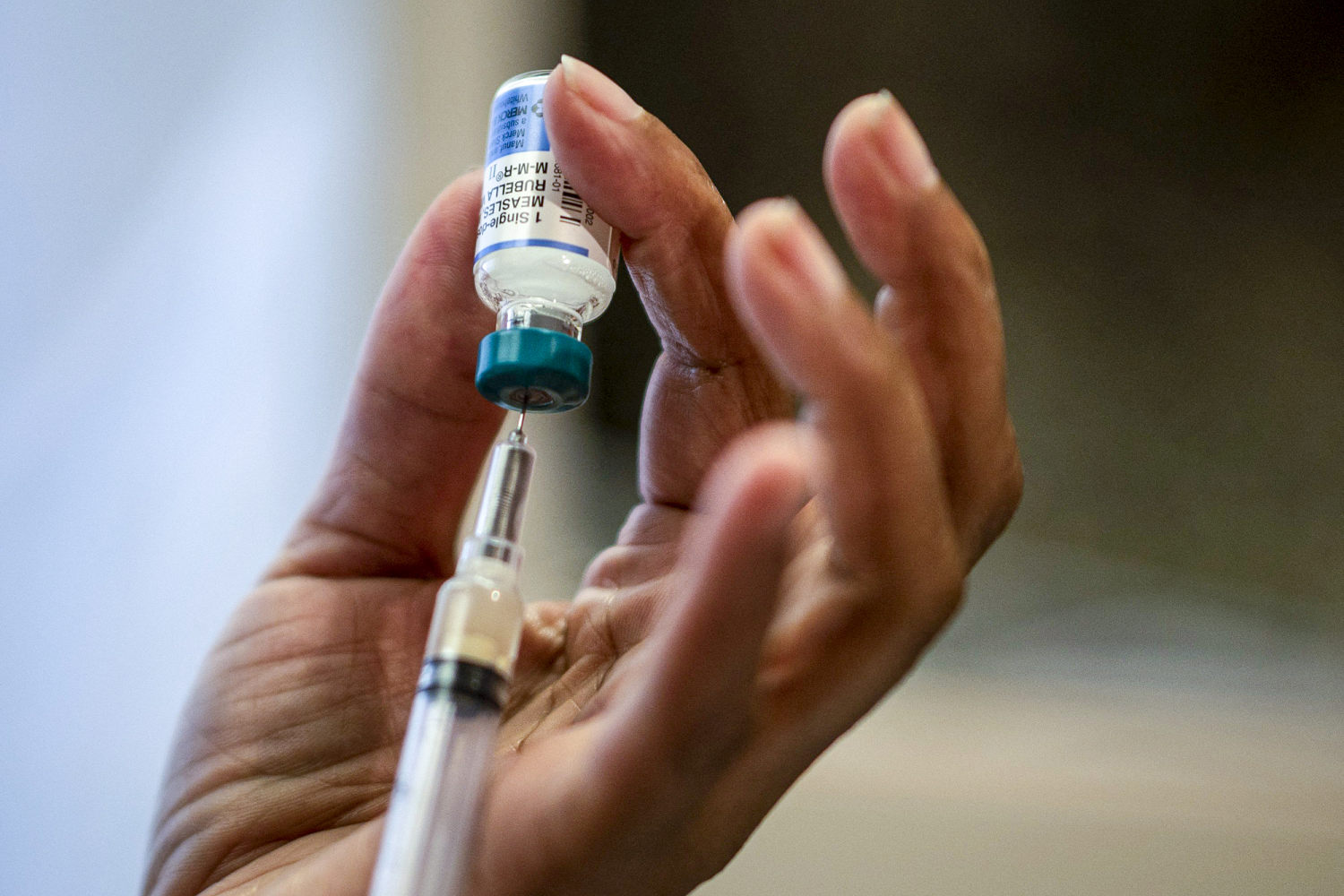Farmers Market season is in full swing, and shoppers are out in full force. Smiles are abundant, and for good reason. From watermelons in Texas to fresh greens in the northern climes, this is the season that puts local agriculture in the spotlight. Food safety is also in the spotlight. At… Continue Reading Consumer Education, Cross-Contamination, Food Safety Guides, For Consumers, For Foodies, cross contamination, farmers markets Food Safety News
Farmers Market season is in full swing, and shoppers are out in full force. Smiles are abundant, and for good reason. From watermelons in Texas to fresh greens in the northern climes, this is the season that puts local agriculture in the spotlight.
Food safety is also in the spotlight. At a recent farmers market in Mount Vernon, WA, Jack and Mary Kay Going, who were going home with some micro-greens and lettuce, said that freshness rates high on their food-safety list. They also like to buy from farmers who specialize in what they’re selling. Cleanliness is another important “must” they look for. “The sellers should definitely have clean hands,” said Jack. “Definitely,” said Mary Kay, enthusiastically agreeing with her husband.
Over at Lopez Brothers Farms, Abi Merino and Jose Lopez were doing a brisk business selling berries and three kinds of cherries. Both were wearing gloves as they filled various sized baskets according to customers’ preferences.
“We wear gloves so we don’t transfer any germs that might be on our hands to the fruit,” said Abi.
At Mexicraves, Trinidad Sahagun and JJ were happily serving an assortment of Mexican dishes to appreciative customers. “Everything is made fresh,” said Trinidad. When asked about food safety, she pointed to a hand washing station behind her. She also said she uses a lot of ice to keep cold food cold and food warmers to keep warm food warm. “Hot things hot and cold things cold,” she said with a smile.
Farmers markets are popular across the nation. Even the USDA has its own farmers market, which is on the National Mall. The agency bills it as its own “living laboratory” for farmers markets across the nation. Shoppers can find organic produce, fresh cut flowers, homemade breads, and locally made foods – from cheeses to dog treats. Breakfast and lunch options are plentiful, too.
According to a recent USDA survey, as of 2023, there were 8,140 farmers markets in the lower 48 states.
Meanwhile at the Mount Vernon farmers market, an appreciative crowd was enjoying a concert put on by a group of select students playing marimbas on a makeshift stage while the beautiful Skagit River flowed in back of them. Sunshine, local food and good music . . . what could be better. Better yet, with summer here, there will be plenty more farmers markets to come.
Food safety tips for farmers market shoppers
•Wash produce thoroughly under running water, even if you plan to peel it before eating, cutting or cooking. Bacteria can be present on the outside of foods such a watermelon, cucumbers or mangoes, which can be transferred to the inside when you cut or peel them.
•Dry produce with a clean cloth or paper towel to help eliminate bacteria.
•Refrigerate cut or peeled fruits and vegetables within two hours after you cut, peel or cook them (or 1 hour if the outside temperature is 90 degrees F or warmer).
•Carefully examine your produce for large bruises, cuts, and insect holes as they can potentially store bacteria that hide and spread rapidly to the inner parts of the produce.
•When buying other perishable items, store them as soon as possible; they should not remain in hot weather (90 degrees F or above) for more than one hour and should not be at room temperature for more than 2 hours.
FDA tips for consumers
Here are some tips from Howard Seltzer, FDA’s Center for Food Safety and Applied Nutrition:
Produce
° Before and after preparing fresh produce, wash your hands for 20 seconds with warm water and soap.
° Wash fruits and vegetables thoroughly under running water just before eating, cutting or cooking. We don’t recommend washing fruits and vegetables with soap or detergent or using commercial produce washes.
°Be sure to refrigerate cut or peeled fruits and vegetables within two hours after preparation.
Juices and Cider
°Check to see whether the juice or cider has been treated (pasteurized) to kill harmful bacteria. Pregnant women, children, older adults, and people with weakened immune systems should drink only pasteurized or treated juice. Ask the seller if the juice or cider has been pasteurized.
Milk and Cheeses
° Don’t buy milk at a farmer’s market unless you can confirm that it has been pasteurized. Raw milk can harbor dangerous microorganisms, such as Salmonella, E. coli, and Listeria, that can pose serious health risks to you and your family. (Ask the seller if the milk has been pasteurized. This is also true for milk used to make cheeses.)
Pregnant women, older adults, and people with weakened immune systems are at higher risk for illness caused by Listeria. One source for this bacteria is soft cheese made from unpasteurized milk. If you buy soft cheese (including feta, Brie, Camembert, blue‐veined cheeses, queso blanco, queso fresco, and panela), make sure that it’s made from pasteurized or treated milk.
Eggs
° Make sure that eggs are properly chilled at the market. FDA requires that untreated shell eggs must be stored and displayed at 45 degrees F.
° Before buying eggs, open the carton and make sure that the eggs are clean and the shells are not cracked.
Meat
° Make sure that the meat is properly chilled at the market. Meat should be kept in closed coolers with adequate amounts of ice to maintain cool temperatures.
° Take an insulated bag or cooler with you to the market to keep meat cool on the way home.
° Be sure to keep meat separate from your other purchases, so that the juices from raw meat (which may contain harmful bacteria) do not come in contact with produce and other foods.
Pay attention
° Pay attention to the vendors’ food safety practices as you shop.
° Check the stands’ overall cleanliness including gloves and clean utensils for food handling, covered garbage cans, coolers for perishables and clean bags.
Grocery Totes
°Reusable grocery totes are a popular, eco-friendly choice to transport food, but be sure to use separate totes for raw meat and poultry and ready-to-eat foods such as fresh produce and breads. It’s important to wash reusable totes often. Reduce or eliminate bacteria by:
° Frequently washing grocery totes, either in the washing machine or by hand with hot, soapy water and drying them in a hot dryer
°Cleaning all areas where totes are placed, such as the kitchen counter
° Storing totes in a clean, dry location
° Avoiding leaving empty totes in the trunk of a vehicle unless wrapped
Food safety tips for venders
° Maintain and monitor temperatures
The temperature of foods is key to food safety because bacteria grow faster when they are in the “danger zone,” either too warm or too cool. This means they need to be kept at certain temperatures not just at the market, but also while foods are being transported and stored.
° Avoid cross-contamination
Cross contamination is when food becomes contaminated by bacteria from another source, such as people’s hands, soil, water, or even other food. Cross‐contamination may also come from a bag, box, counter or any other surface.
Keep raw meat separate from ready to eat or fresh produce.
° Maintain good personal hygiene
Everyone involved in the market ‐‐ staff, vendors and anyone representing the farmers market – should have good personal hygiene.
°Use gloves, deli paper, tongs or even a bag to protect the product and convey good sanitation to customers. If they are sampling, they will be required to do so.
°Don’t eat at the booth in front of shoppers.
°Sampling can be a great way to help increase vendor sales. Consult with the local health jurisdiction where the market is located for specific sampling policies.
°Don’t leave food for samples out for more than 2 hours.
°Have clean wash water to wash equipment.
°Have a hand-washing station in accordance with the health department rules.
°Packaging for any product should be clean, visually appealing, and food grade quality, if possible.
°Produce boxes should always be clean and neatly stacked, if possible.
Equipment
°Getting set up for food safety usually requires investing in equipment such as thermometers, sampling trays, ice chests or refrigeration of some sort, and of course, mobile cooking equipment for prepared foods. These items don’t have to be expensive. Talk to other vendors and food safety inspectors to find out what brands are best.
A final word of advice
Make the farmers’ market your last stop before heading home. That way your fresh veggies, fruit, and other perishable foods won’t have to sit long in a hot car. By doing this, you’ll be able to quickly get the food to the refrigerator.
Do not count on a vendor to keep you healthy; use your own safety standards.
(To sign up for a free subscription to Food Safety News,click here)







